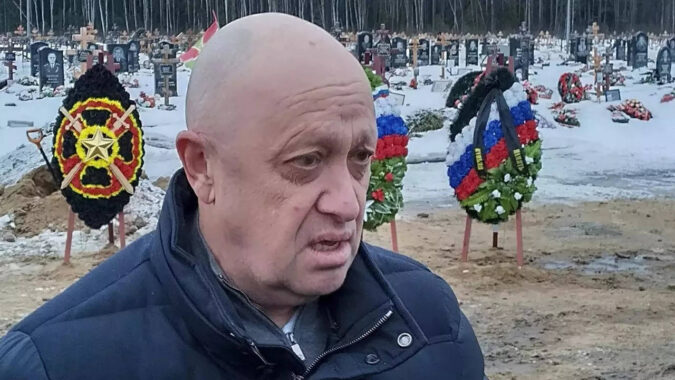WASHINGTON: US intelligence, in its preliminary assessment, has found that the plane crash which previously was presumed to be an accident and resulted in the demise of the leader of Wagner Group chief Yevgeny Prigozhin, was deliberately caused by an explosion.
The plane crash occurred two months following Yevgeny Prigozhin’s short-lived rebellion, which was perceived as the most significant threat to Russian President Vladimir Putin‘s leadership since he assumed office. This intentional explosion aligns with a pattern observed in Russian President Vladimir Putin’s history of suppressing dissenting voices.
On Wednesday, Russia’s ministry of emergency reported the occurrence of a private plane accident, while en route from Moscow to Saint Petersburg. Initial details indicate that all 10 individuals aboard, including three crew members, lost their lives in the incident, as stated by the ministry.
Multiple US and Western officials, who spoke anonymously due to lack of authorization, have disclosed this information. Though the officials refrained from providing specific details regarding the nature of the explosion, it is believed to be a manifestation of Putin’s consistent approach to quelling those who oppose his regime. The incident is thought to be a response to a mutiny that challenged Putin’s authority, leading to the loss of Prigozhin and several of his key associates.
These revelations about the US assessment come to light concurrently with Putin’s expression of condolences to the families of the individuals reportedly on board the ill-fated jet. His acknowledgment of “serious mistakes” implies a recognition of the gravity of the situation.
The incident underscores the ongoing power struggles and political complexities within Russia. It sheds light on the extent to which dissent is handled and the lengths to which those in authority may go to ensure their dominance. As more information surfaces, the international community is likely to scrutinize the situation, seeking a comprehensive understanding of the events surrounding the explosion and its implications for Russia’s internal dynamics and external relations.
The plane crash occurred two months following Yevgeny Prigozhin’s short-lived rebellion, which was perceived as the most significant threat to Russian President Vladimir Putin‘s leadership since he assumed office. This intentional explosion aligns with a pattern observed in Russian President Vladimir Putin’s history of suppressing dissenting voices.
On Wednesday, Russia’s ministry of emergency reported the occurrence of a private plane accident, while en route from Moscow to Saint Petersburg. Initial details indicate that all 10 individuals aboard, including three crew members, lost their lives in the incident, as stated by the ministry.
Multiple US and Western officials, who spoke anonymously due to lack of authorization, have disclosed this information. Though the officials refrained from providing specific details regarding the nature of the explosion, it is believed to be a manifestation of Putin’s consistent approach to quelling those who oppose his regime. The incident is thought to be a response to a mutiny that challenged Putin’s authority, leading to the loss of Prigozhin and several of his key associates.
These revelations about the US assessment come to light concurrently with Putin’s expression of condolences to the families of the individuals reportedly on board the ill-fated jet. His acknowledgment of “serious mistakes” implies a recognition of the gravity of the situation.
The incident underscores the ongoing power struggles and political complexities within Russia. It sheds light on the extent to which dissent is handled and the lengths to which those in authority may go to ensure their dominance. As more information surfaces, the international community is likely to scrutinize the situation, seeking a comprehensive understanding of the events surrounding the explosion and its implications for Russia’s internal dynamics and external relations.
